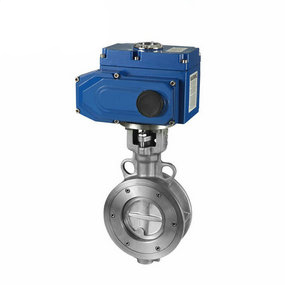Application of valves in industry
The valve is the control device of the fluid pipeline. Its basic function is to connect or cut off the flow of the pipeline medium, change the flow direction of the medium, regulate the pressure and flow of the medium, and protect the normal operation of the pipeline and equipment. With the development of modern science and technology, valves are increasingly widely used in industry, construction, agriculture, national defense, scientific research and people's life, and have become an indispensable universal mechanical product in all fields of human activities. For example, a modern petrochemical plant needs tens of thousands of valves, and a modern residential building also needs thousands of valves. The problem of increasing energy consumption due to improper use or selection of valves has gradually attracted people's attention. Throttle regulation is one of the functions of the valve. A throttle valve is installed at the pipeline inlet (pump outlet) to regulate the flow or pressure of the medium in the pipeline by changing the opening of the valve. The essence of throttling regulation is to change the resistance of the pipeline, change the gradient of the pipeline characteristic curve, and achieve the purpose of changing the working point. Variable speed regulation is another function of the valve. Variable speed regulation is to change the pump performance curve through variable speed under the condition that the pipeline characteristic curve remains unchanged, thus changing the regulation mode of the pump working point. For the centrifugal pump with the quadratic relationship between load torque and speed, the energy-saving benefit of variable speed regulation is the most significant. The range of speed change adjustment should not be too large. Generally, the minimum speed is not less than 50% of the rated speed, usually 10%~70%. When the speed is lower than 50% of the rated speed, the pump efficiency drops significantly. When selecting the variable speed regulating device, technical and economic factors shall be considered, comprehensive analysis and comparison shall be made, and the best shall be selected to obtain the maximum economic benefits. Considering the current production level, supply, maintenance capacity and energy saving requirements of speed governing devices in China, a speed governing device should be selected according to local conditions to save the electric energy that should be saved. The steam trap is an automatic control device that automatically discharges condensed water from the closed container where steam is stored, while maintaining no leakage of fresh steam. When necessary, it also allows steam to pass through according to the predetermined flow. Steam is widely used in industrial and agricultural production and living facilities. Whether in the steam transmission pipeline system, or in the process of heating, drying, insulation, disinfection, steaming, concentration, heat exchange, heating or air conditioning, the condensate generated in the process of using steam for heating, drying, insulation, disinfection, steaming, condensation, heating or air conditioning, all need to be drained through the steam trap without allowing the steam to leak out. The steam trap is an important accessory of the steam use system. Its performance plays an important role in the normal operation of the system, the improvement of the thermal efficiency of the equipment, and the rational use of energy. It is an important energy-saving measure to select a good drain valve. Therefore, appropriate drain valves shall be selected according to different working conditions. Where condensate needs to be drained immediately, such as turbine steam engine, steam pump, steam main pipe, etc., it is not suitable to use steam trap with supercooling, such as pulse type steam trap and thermo static bellows type steam trap. When the condensate is less than 15% of the rated maximum displacement, the pulse type steam trap should not be selected, because under this condition, steam is easy to flow out of the drain hole. For intermittent indoor steam heating equipment and pipes, drain valves with good exhaust performance shall be selected, such as inverted bucket type or thermostatic type. Mechanical drain valves are generally not suitable for outdoor operation. If it must be selected, anti freezing protection measures shall be taken.
Previous: Pneumatic butterfly valve can make full use of air source pressure
Next: Technical specifications for main technical performance of valves

